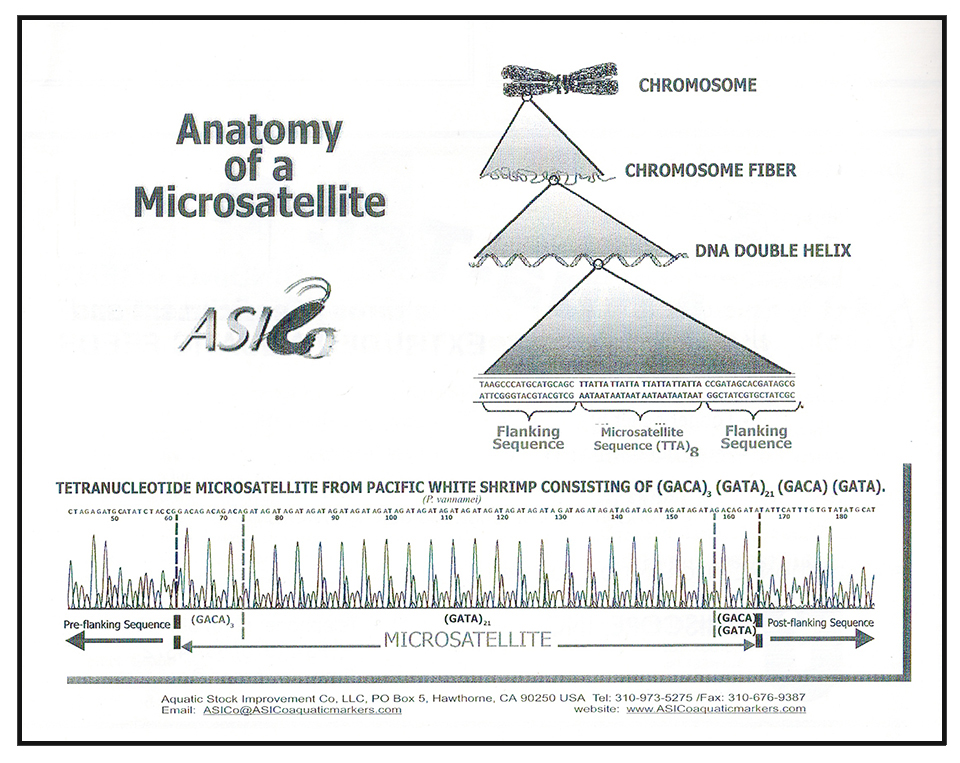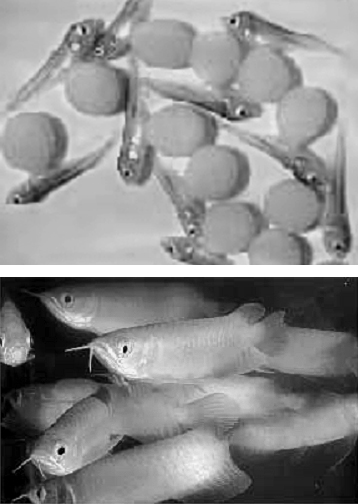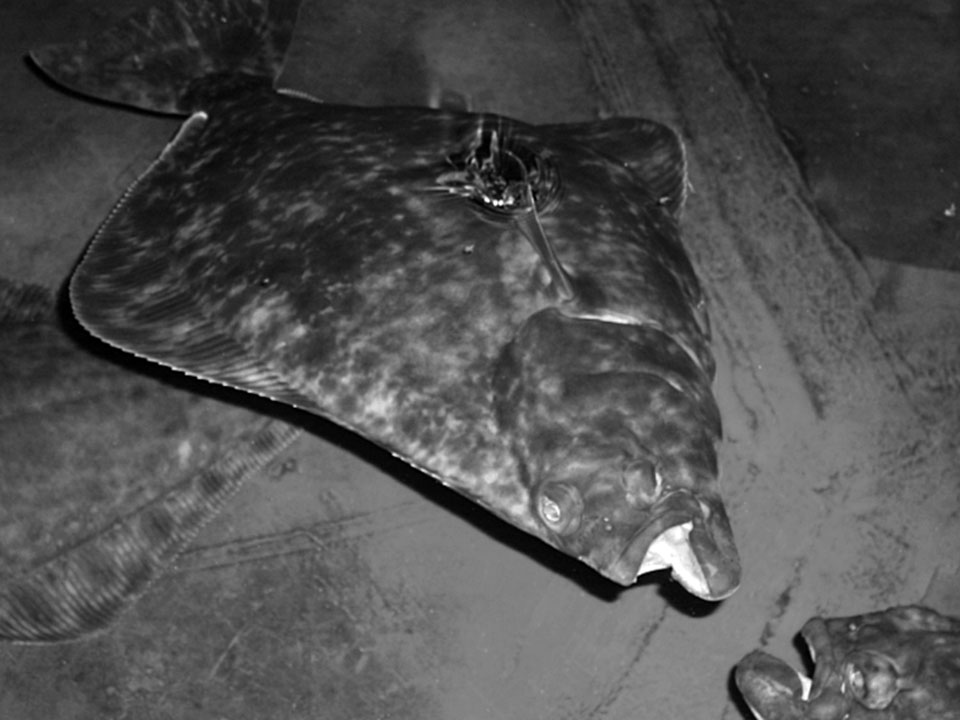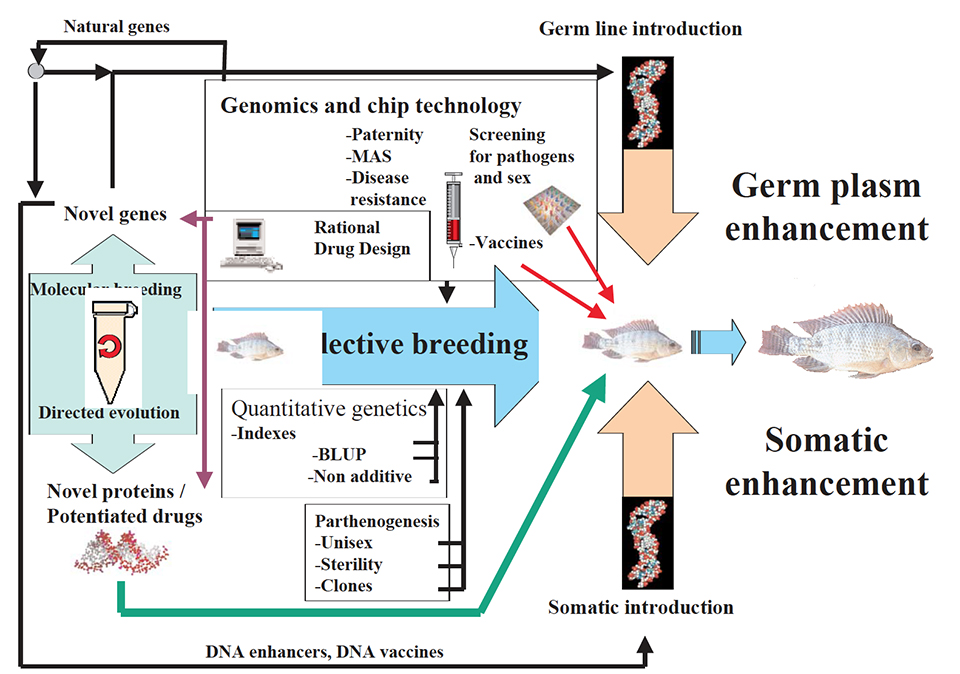Grow better quality animals in less time, with greater survival, and at less cost
Is it possible for aquaculture to be sustainable? The answer is a qualified “yes,” assuming the industry can implement radical changes in management thinking, conserve resources in culturing, and improve stock through the accelerated use of biotechnology. Chemicals, physical methods or nutritional components can not double crop production from the highest levels of output attained in this century.
In the 21st century, higher output will be a consequence of production efficiency per unit area rather than increases in land under cultivation. To envision what aquaculture will be like in the future, you need only look at past productivity gains in other agriculture sectors. For example, in the last 30 years, chicken egg production increased by 300 percent, cow milk production by 250 percent, daily weight gains in pigs grew by 200 percent, and in the last decade, salmon production gains exceeded 50 percent (both in growth and cost savings).
Farmers have employed selective breeding to improve their stock for centuries. Today, phenotypic (observational) programs are used for increasing the probabilities of trait occurrence and can often lead to improvements exceeding 10 percent per generation. However, these programs are time consuming, costly if many families are maintained, and can lead to mixed or negative results due to inbreeding. In the past ten years, genetic tools have often complemented plant and animal breeding programs. These tools are information-based and rely on very specific DNA sequences found throughout the specific species genome. ASICo L.L.C., a company started in 1998, is the first to begin offering these same molecular tools for commercial aquaculture applications.

Emergence of microsatellites
Theoretically, there is a least one gene responsible for every trait or heritable function which characterizes the life of an organism. In the genome there are nucleotide pair combinations which repeat themselves, forming groups known as “microsatellites”. There may be thousands or hundreds of thousands of microsatellites spread randomly throughout the genome. Microsatellites are present in plants, animals and bacteria. Certain microsatellites can always be found in the same location along the genome of the same species or closely related species.
Microsatellites are suitable as genetic tools since some will display high degrees of variation (polymorphism) within the same genomic location (locus). This variation is good since it allows the breeder to use that microsatellite locus as a potential marker to a gene (or genes), and the variation within that locus for differentiating between animals, families, or even populations.
Suitable polymorphic loci are used to display finite differences of individual animals. This means that relationships can be determined between brother and sister, full from half siblings, parents from off-spring, and general relatedness or diversity within a population. Essentially, microsatellites provide a way to fingerprint each animal with the use of one or more polymorphic loci. Similar technology is so definitive that it is used in forensics to identify a single human from a world population of billions.
Microsatellites as markers
Much of today’s genetic research is devoted to locating genes and chromosomes, and to developing genetic maps. This process may take years to accomplish since decoding the DNA sequence of shrimp, fish or bivalves may require tens of thousands of manhours. A genetic map shows the locations of genes or DNA fragments that have been identified, some of which express themselves as desirable traits for the farmer. It is possible, however, to find microsatellites throughout the aquatic species genome without knowledge of the genome or genetic mechanisms that make genes operative. When these markers are identified and characterized, each may be used as a signpost or beacon to help locate genes that express the desired trait. Markers are related to traits as a function of the distance they are from the gene responsible for that trait.
The ability to fingerprint and tag
These allow us to track genetic diversity among families and populations, establish pedigree lines centered around desired expression of certain traits, and determine vertical and horizontal lineage should true biosecure measures need to be implemented at the breeding center. As a result, one can build a unique profile on developed strains from non-lethal tissue sampling.
Marker-assisted selection
The primary value of markers is to assist in the breeding process and to improve the breeding prediction. Allelic profiling and association with traits of economic importance compounds the results of any breeding program and reduces the time required to achieve those results. Are there genetic differences between fast- and slow-growing fish? Or resistant stocks from those which don’t survive? Markers have already proven their guidance value in the plant and animal sectors.
The use of microsatellites is one of many different marker approaches, but has proven to be the tool of choice over the last ten years by frequency of application across all commercial agriculture sectors. ASICo has already found breeding and identification applications with these tools for more than twelve aquatic species. Genetic improvement through selective breeding allows farmers to grow better quality animals in less time, with greater survival, and at less cost than animals removed from the wild.
(Editor’s Note: This article was originally published in the December 1999 print edition of the Global Aquaculture Advocate.)
Now that you've reached the end of the article ...
… please consider supporting GSA’s mission to advance responsible seafood practices through education, advocacy and third-party assurances. The Advocate aims to document the evolution of responsible seafood practices and share the expansive knowledge of our vast network of contributors.
By becoming a Global Seafood Alliance member, you’re ensuring that all of the pre-competitive work we do through member benefits, resources and events can continue. Individual membership costs just $50 a year.
Not a GSA member? Join us.
Author
-
Leland L. Lai
Aquatic Stock Improvement Company
P.O. Box 5
Hawthorne, California 90250 USA
Tagged With
Related Posts

Health & Welfare
Microsatellites: Applications in aquaculture
Microsatellites are useful for molecular tagging of individuals and molecular dissection of complex traits such as growth, temperature tolerance and disease resistance.

Health & Welfare
Improving shrimp stocks with microsatellites
Libraries have been produced from Pacific white shrimp containing many thousands of microsatellites, a source of potential markers for use in diverse applications.

Health & Welfare
Avoiding genetic bottlenecks in broodstock selection
Broodstock selection programs for Atlantic halibut identify top first-generation performers to develop a strain best suited to aquaculture conditions.

Health & Welfare
Bioinformatics: The ultimate breeding tool
Bioinformatics, a true hybrid between molecular and computer sciences, changes the rules of both breeding and medicine with a novel approach.


